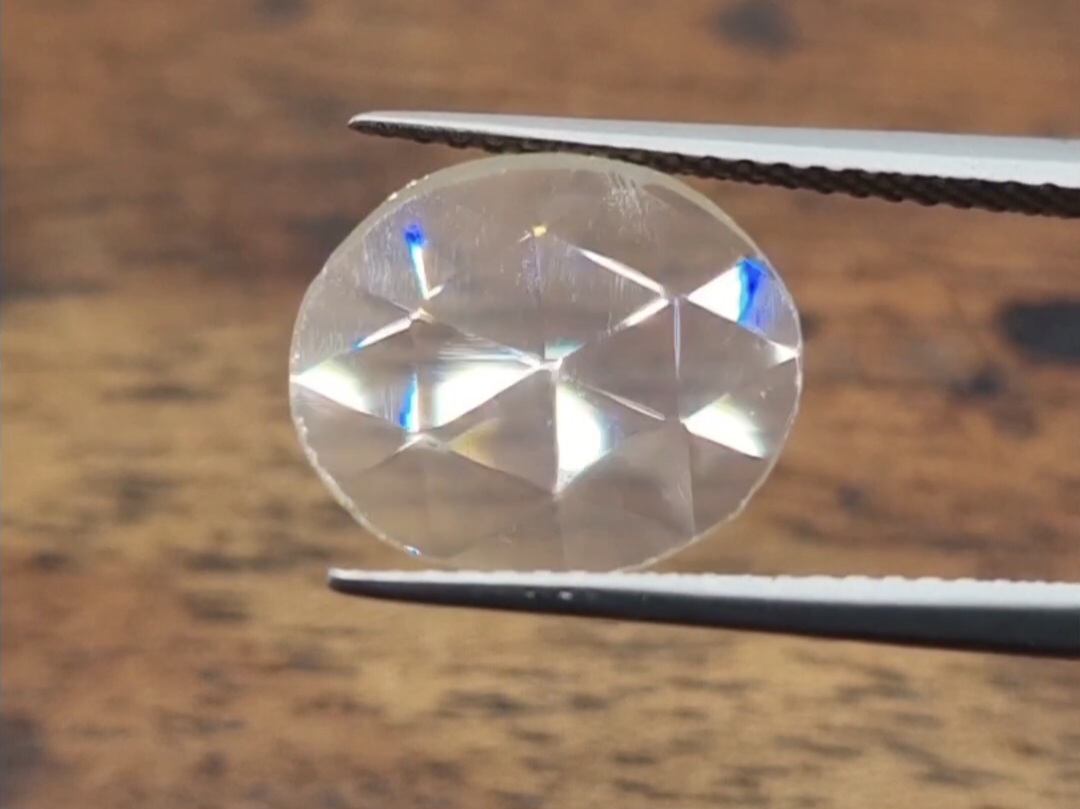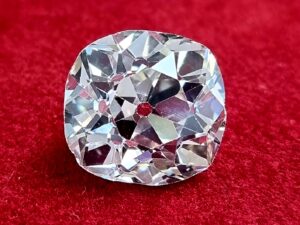This article is about the unique characteristics of Antique Rose Cut diamonds. From their historical origins to their distinct features and modern-day appeal, this post delves into what makes these vintage gems so captivating. We’ll also explore how they differ from modern cuts, their grading criteria, and why they continue to enchant collectors and jewelry enthusiasts alike.
Table of Contents
The Origin of Rose Cut Diamonds
The Rose Cut diamond holds a special place in the history of diamond cutting as it was the first complex cut to be developed. Emerging in the early 16th century, this cut represented a significant advancement in the art of diamond polishing. For the first time, polishers were able to create a diamond that truly shone, particularly in the low-light conditions of the era, such as candlelight.
The diamond cut features a flat base and a dome-shaped crown that rises to a single apex. Comprising of a multitude of triangular facets, the arrangement resembles the petals of a rose, giving the cut its name. This unique facet structure allowed the stone to interact with light in a more sophisticated manner compared to simpler predecessors like the Table Cut.
The new gem quickly gained popularity, especially among the aristocracy of the 16th and 17th centuries. It was a staple in Georgian and Victorian jewelry, often set in silver settings to enhance the diamond’s natural sparkle. Although it fell out of favor in the early 20th century with the advent of more modern cuts like the Round Brilliant, the Rose Cut has experienced a resurgence in popularity in recent years, particularly among those who have a fondness for antique and vintage jewelry.
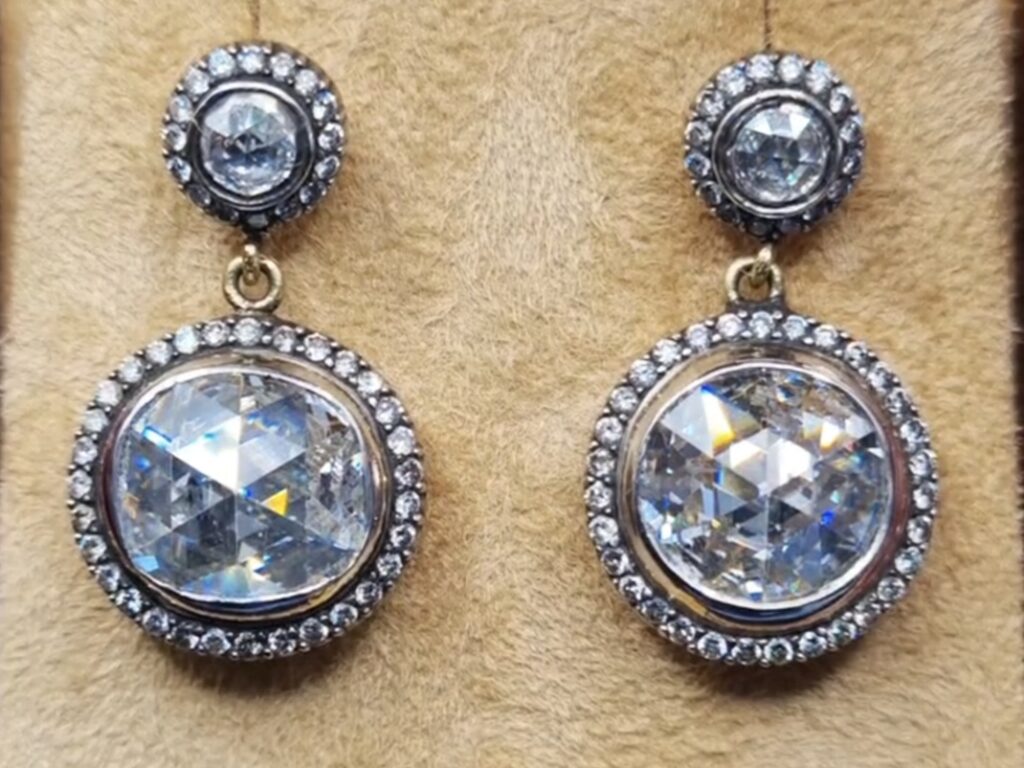
Characteristics of Antique Rose Cut Diamonds
This diamond is distinguished by its unique structure, which typically consists of a flat base and a domed top that resembles the petals of a rose. The top is usually adorned with 3 to 24 facets, which are arranged in a symmetrical pattern. Unlike modern brilliant cuts, the Rose Cut doesn’t have a pavilion, culet, or table. This absence gives this diamond cut its signature flat-bottomed appearance.
For a deeper dive into the world of diamond characteristics, you may find it useful to read my posts on Understanding the 4 C’s of Diamonds and Anatomy of a Diamond: Modern and Antique.
Faceting
The facets on these stones are usually triangular and rise to form a point at the apex. These facets are what give this cut its ability to play with light, creating a subdued, soft glow rather than the intense sparkle seen in modern brilliant cuts.
Shape Variations
While the most common shape for a Rose Cut diamond is round, they can also be found in oval, pear, and even freeform shapes. This variety adds to the allure and uniqueness of each diamond.
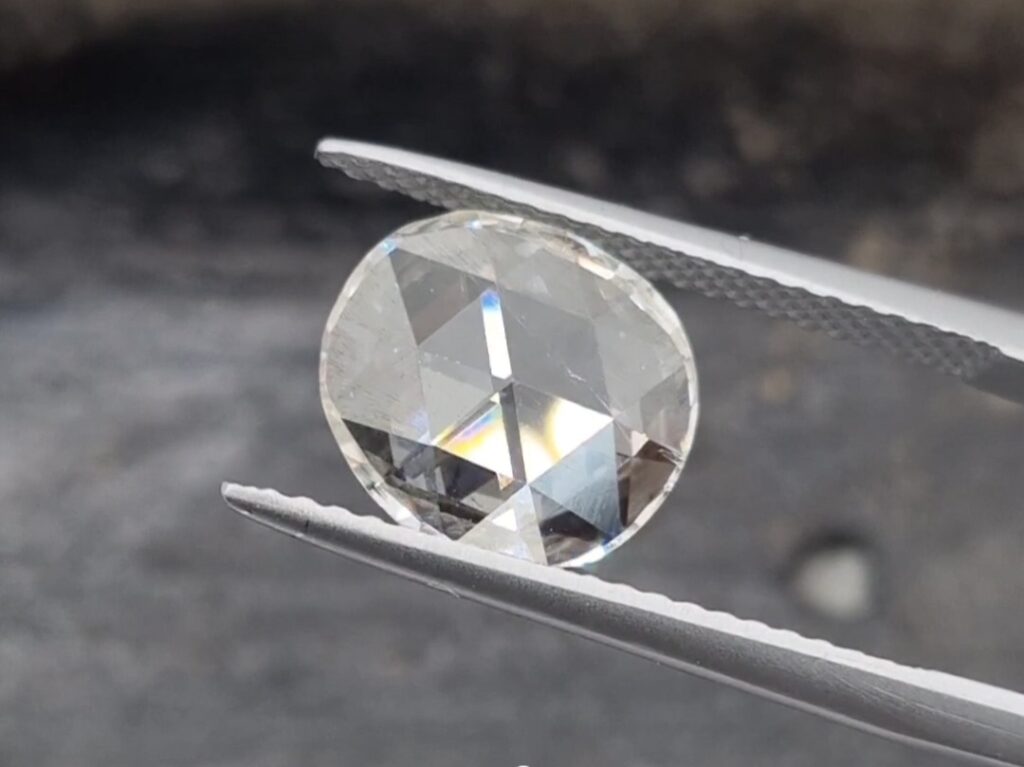
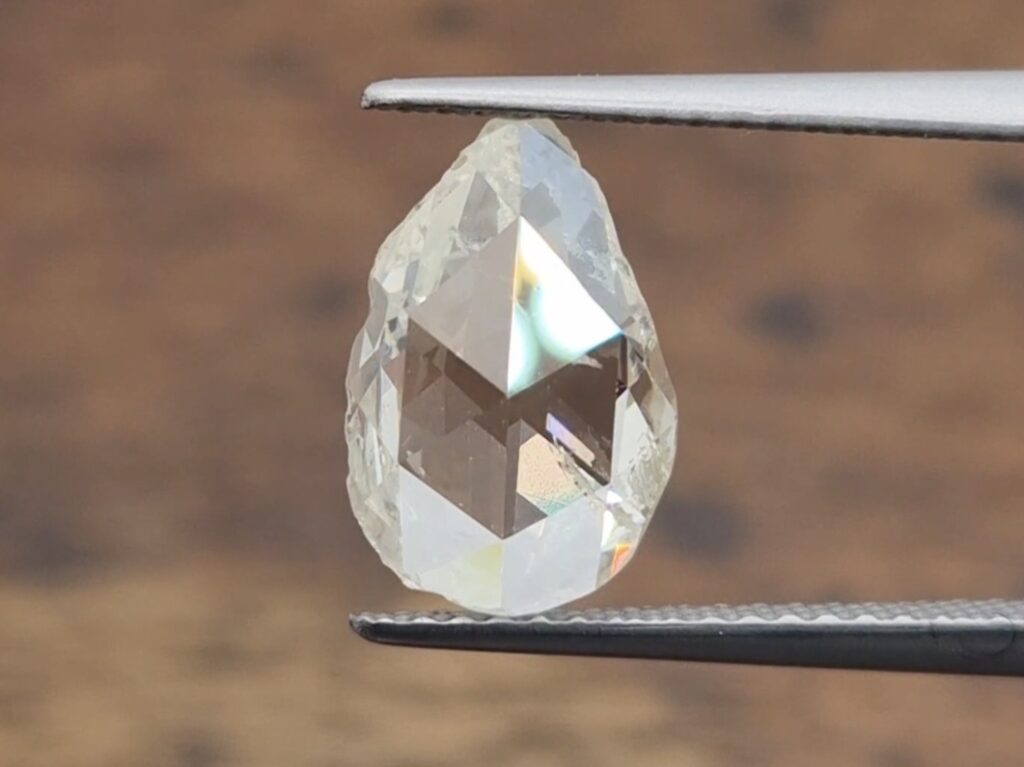
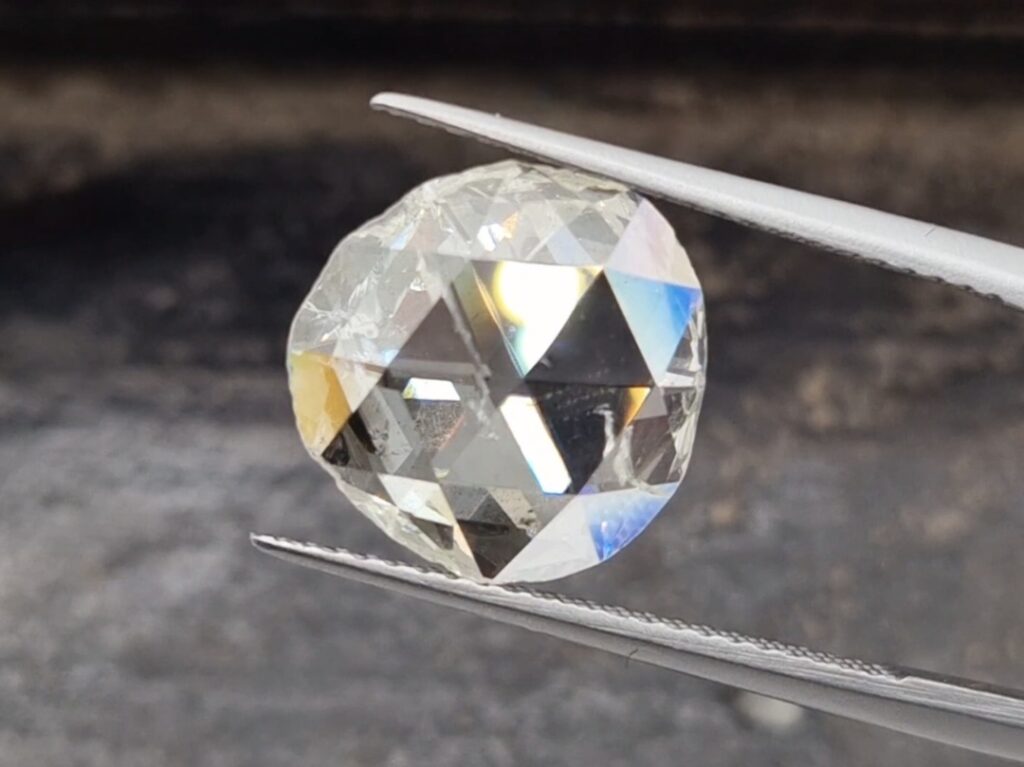
Size and Proportions
These diamonds can vary widely in size, but they are generally shallower than modern cuts due to their flat base. This shallowness often makes them appear larger face-up than their actual carat weight would suggest.
Color and Clarity
Antique Rose Cut diamonds often exhibit a range of colors and clarities, much like their modern counterparts. However, the unique facet structure of this diamond shape can influence how color and inclusions are perceived when the diamond is viewed face-up. Because of their flatness, Rose Cut diamonds tend to play white.
The Dome
The dome, or the area where the facets are situated, is typically elevated in these stones. Notable exceptions exist, such as antique flat rose cuts of Persian origin, where the dome may not be as pronounced. However, it’s common to observe a significantly higher dome in these vintage cuts compared to their modern counterparts.
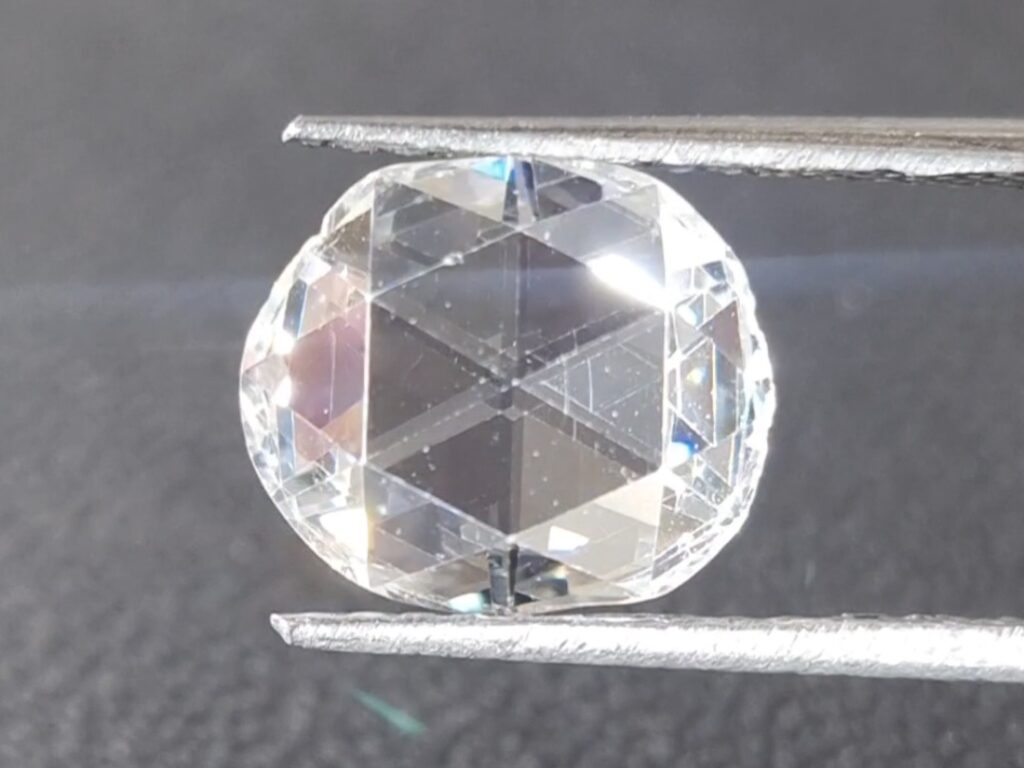
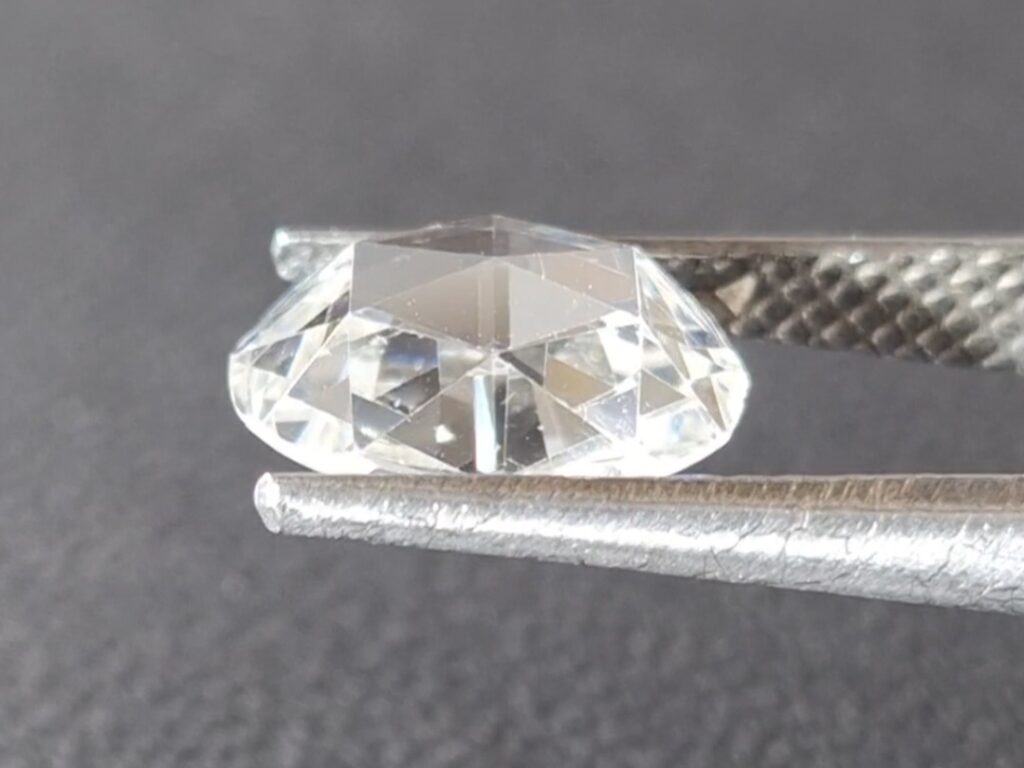
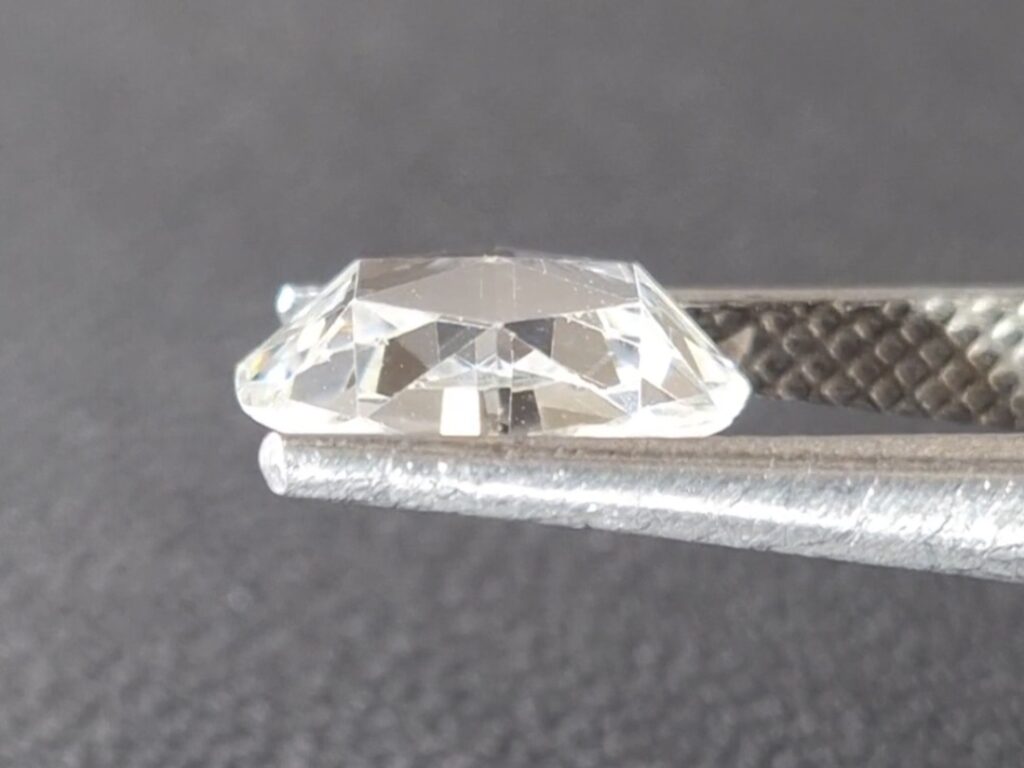
The Persian Rose Cut Diamond
The Persian Rose Cut Diamond is a unique and highly sought-after variant of the traditional cut. Originating from modern-day Iran and Turkey, these diamonds were crafted from the mid-19th century until the early 20th century. What sets them apart is their distinct flatness and the specialized techniques used by artisans of the time.
Unique Craftsmanship
Artisans in Iran developed a unique know-how for creating these superb gems. Unlike other diamonds that go through multiple stages of cutting and polishing, Persian Rose Cuts were polished directly on the polishing wheels from the rough. This direct method of crafting resulted in a diamond that is exceptionally flat, yet captivating in its own right.
Rarity and Collectability
One of the most intriguing aspects of Persian variant is that they cannot be replicated with modern equipment. The specific utensils and know-how required for their creation have been lost to time, making each existing Persian Rose Cut a unique piece of history. This has led to them becoming highly sought-after items among collectors and enthusiasts.

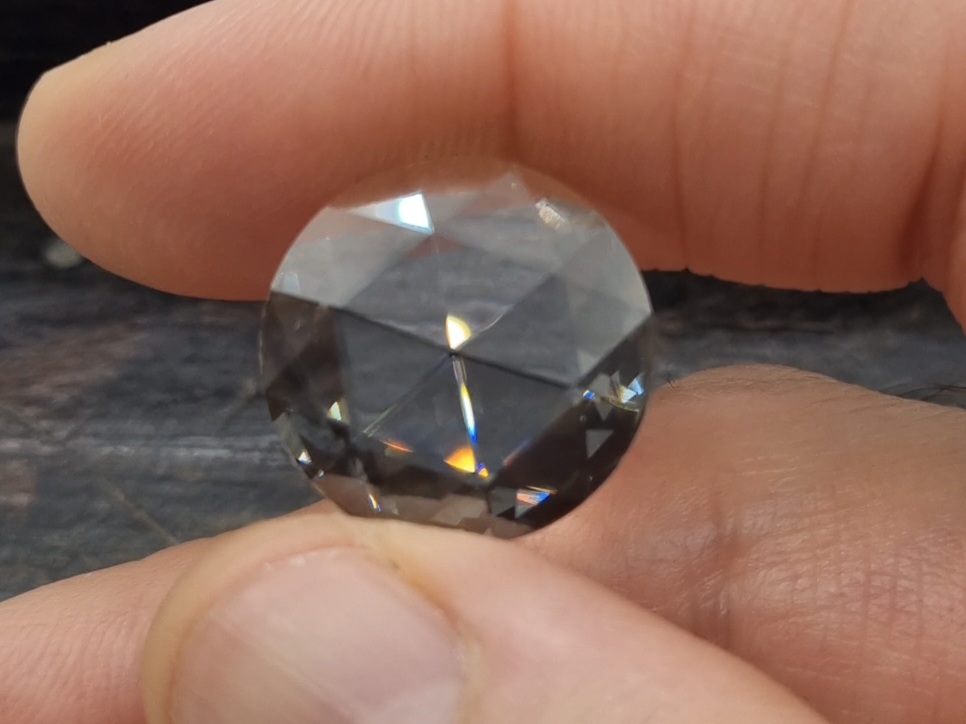
Antique Rose Cut Diamonds vs. Modern Rose Cuts
When discussing these diamonds, it’s essential to differentiate between antique and modern versions, as each has its own unique characteristics and appeal.
Faceting and Symmetry
Antique Rose Cut diamonds were meticulously hand-cut, resulting in a unique, artisanal appearance. The number of facets could vary, and the symmetry was less precise than in modern variants. In contrast, today’s versions are machine-cut, leading to a more uniform and symmetrical appearance. This results in a different play of light, with modern Rose Cuts appearing more symmetrical but sometimes lacking the unique character of their antique counterparts.
Material and Craftsmanship
Antique versions of this cut were often made from older diamond crystals, which can impart a slightly different color or inclusion pattern compared to modern stones. The high dome of antique Rose Cuts gives them a vibrant life that is highly sought after. Modern versions, on the other hand, are frequently made from leftover flat rough, which can result in less characterful, “lifeless” diamonds.
Girdle Differences
One notable difference is the girdle. Modern Rose Cuts often feature a thick, faceted girdle designed to preserve more weight. While this may be economically advantageous, it is often considered less aesthetically pleasing compared to the thinner girdles commonly found in antique versions.
Availability and Market Preferences
Antique Rose Cuts are rarer and often command higher prices due to their historical value and unique craftsmanship. Modern ones are more readily available but are often considered less desirable due to the reasons mentioned above. In today’s market, polishers would typically opt to create other shapes like rounds or cushions from the rough material that would have been used for Rose Cuts in the past.
For those interested in diving deeper into the world of diamonds, you may find my other posts such as The Old Mine Cut, The History of Diamond: An In-Depth Guide, and The Old European Cut to be valuable resources.
Grading Antique Rose Cut Diamonds
When it comes to grading these unique diamonds, the process can be a bit different than grading modern diamond cuts. Here’s what you need to know:
The 4 C’s and Antique Rose Cuts
The traditional 4 C’s of diamonds—Cut, Color, Clarity, and Carat Weight—still apply to these diamonds, but with some nuances. For example, the Gemological Institute of America (GIA) and other grading labs do not provide a cut grade for antique cuts, as the standards for cut were developed long after these stones were created.
Color and Clarity
Antique Rose Cut diamonds often appear whiter when viewed face-up, despite their body color. This is due to their unique proportions and facet structure. When it comes to clarity, these diamonds may show signs of age such as micro-scratches or minor chips. These are often considered a testament to the diamond’s history and are generally left untouched, as they can only be noticed under 10x magnification.
Carat Weight and Size
The carat weight of an Antique Rose Cut diamond is distributed differently compared to modern cuts, often making the diamond appear larger than its actual carat weight. This is particularly true for the antique ones with a high dome.
Provenance and Rarity
Antique Rose Cut diamonds are increasingly rare, especially those with a high dome or those known as Persian Rose Cuts. Their scarcity often adds to their value, making them highly sought after by collectors and aficionados alike.
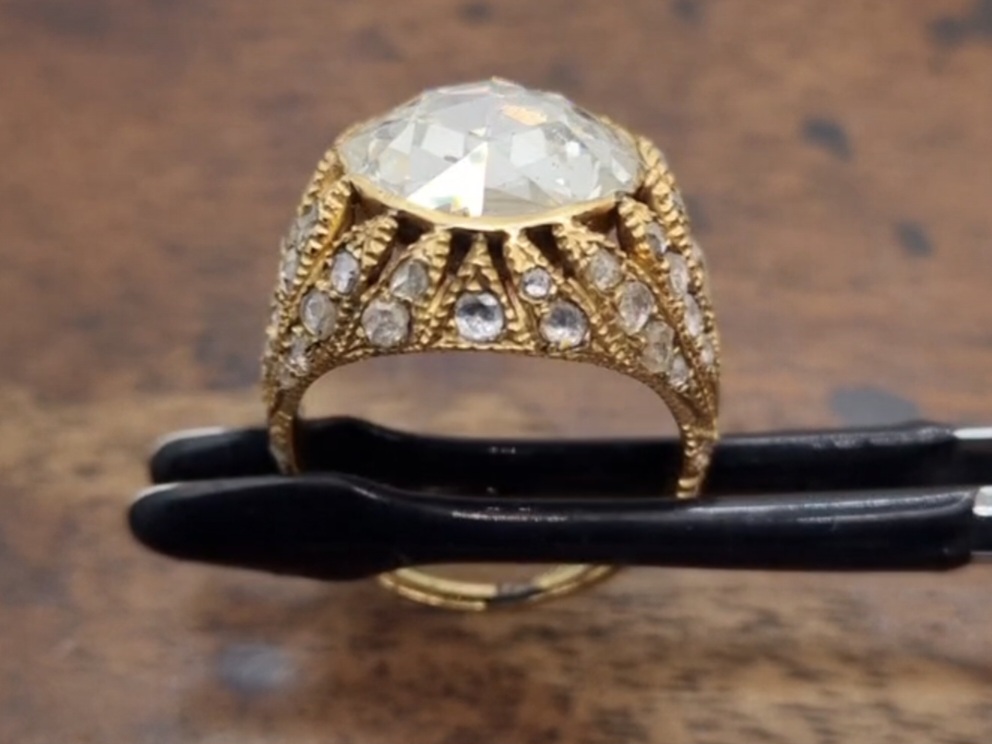
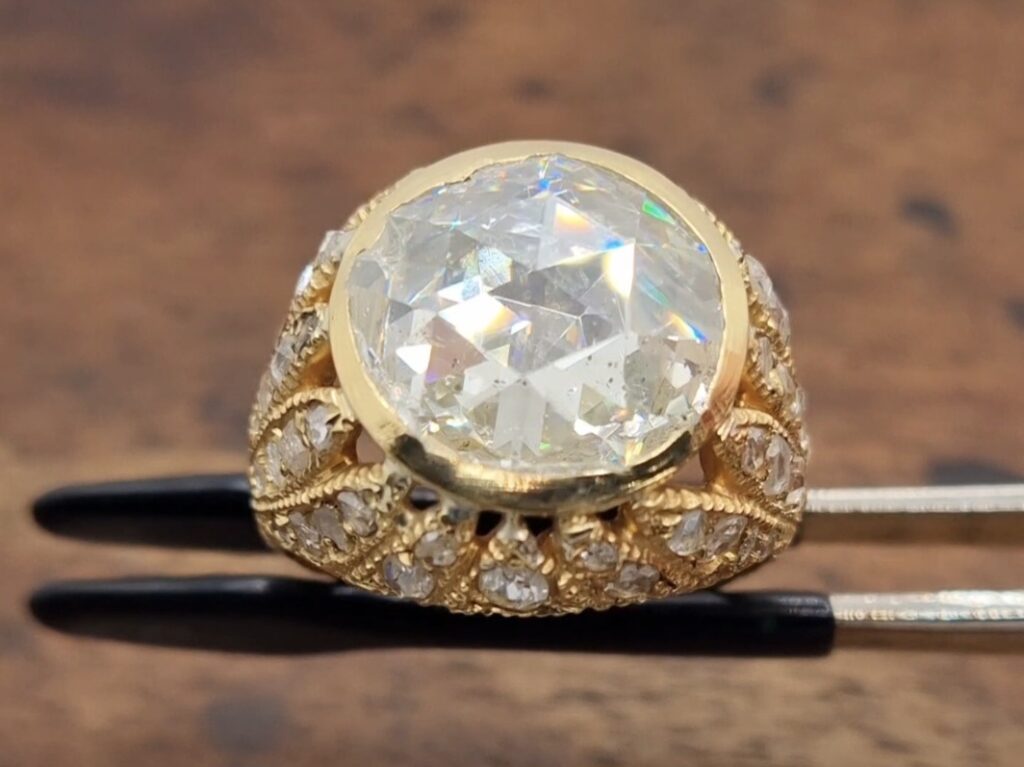
The Continuing Appeal of Antique Rose Cut Diamonds
The allure of these diamonds is far from fading; in fact, it’s stronger than ever. Here’s why these unique diamonds continue to captivate:
Timeless Elegance
The Antique Rose Cut has a vintage charm that transcends trends. Its unique faceting and romantic glow offer a subtle elegance that appeals to those looking for something different from the high brilliance of modern diamond cuts.
Unique Characteristics
Each Antique Rose Cut diamond is a one-of-a-kind gem. The hand-crafted nature of these diamonds, especially those with a high dome or the rare Persian Rose Cuts, makes each stone unique. This individuality is a significant part of their enduring appeal.
Versatility in Jewelry Design
Antique Rose Cut diamonds are incredibly versatile, fitting seamlessly into a variety of jewelry styles, from vintage to contemporary. Their unique light play and subtle glow make them a popular choice for engagement rings, pendants, and even earrings. They also have a gigantic spread, meaning they appear much larger than their carat weight.
Collectible Value
The scarcity of Antique Rose Cut diamonds, particularly those with unique features like a high dome or Persian origin, adds to their collectible value. They are often sought after by collectors and can be considered investment pieces.
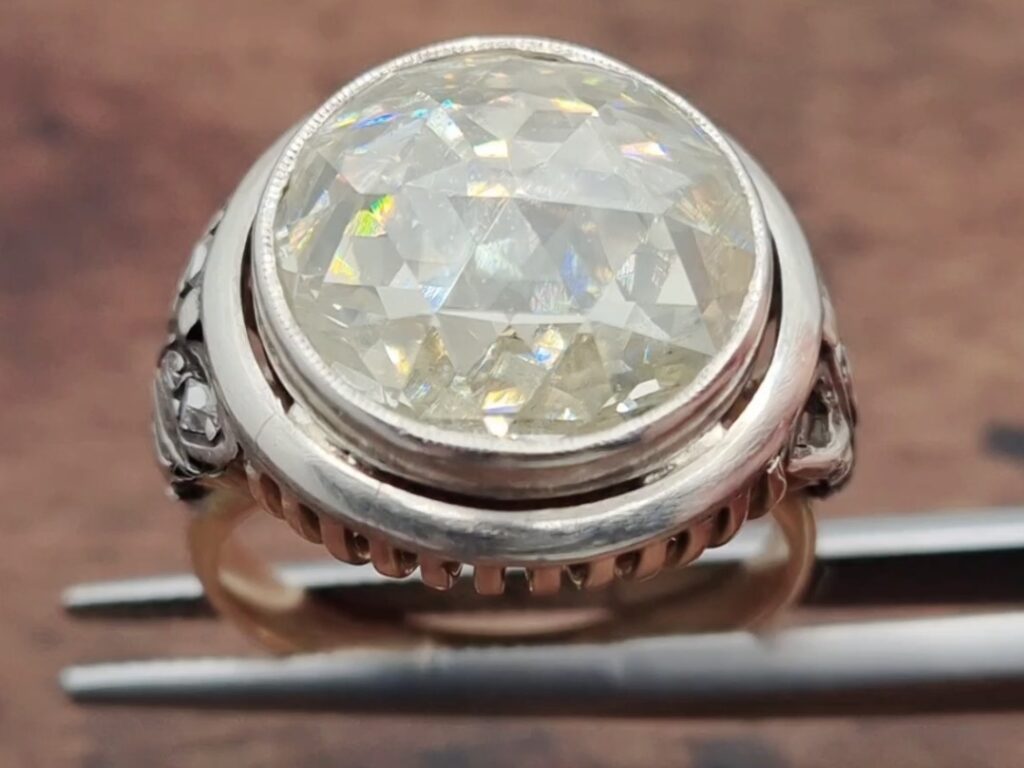
Emotional Connection
There’s something inherently romantic about owning a piece of history. These gems offer not just beauty but a tangible link to the past, making them emotionally as well as aesthetically valuable.
Conclusion
In summary, Antique Rose Cut diamonds offer a unique blend of historical significance, individuality, and timeless elegance. Their distinct characteristics, from the high dome to the Persian variations, make them a fascinating subject not just for collectors but for anyone appreciating the art of diamond cutting. Whether you’re looking to invest in a piece of history or find that perfect, one-of-a-kind gem for a special piece of jewelry, these diamonds diamonds hold an enduring appeal that stands the test of time.
Additional Resources
- “Diamonds: An Early History of the King of Gems” by Jack Ogden – A deep dive into the history of diamonds, including antique cuts.
- “The Nature of Diamonds” by George E. Harlow – This book covers the geological aspects of diamonds and offers a historical perspective.
- “Diamond Cuts in Historic Jewelry – 1381 to 1910” by Herbert Tillander – A specialized book focusing on the evolution of diamond cuts through history.
- “The Book of Diamonds” by Joan Younger Dickinson – A comprehensive guide to diamonds, including their history, lore, and famous diamonds.
- “Diamonds: The Antoinette Matlin’s Buying Guide” – This book offers practical advice for buying diamonds, including antique cuts.
- “Famous Diamonds” by Ian Balfour – This book provides an in-depth look at some of the world’s most famous diamonds, including those with antique cuts.


